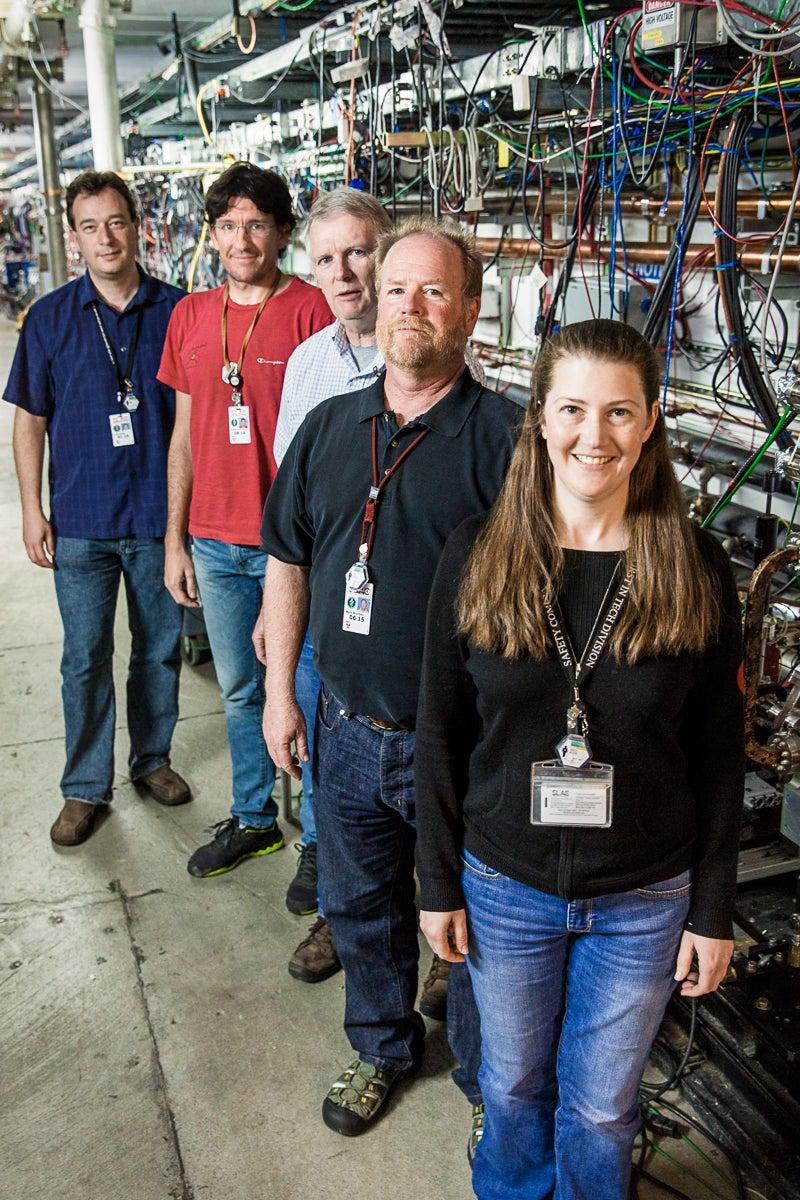SLAC Accelerator Physicists Help Make Sure ILC Will Hit Target
SLAC accelerator physicists have been instrumental in creating a vital part of a future Higgs boson-producing linear accelerator, from developing the initial design nearly 15 years ago to its successful demonstration in 2013.
By Lori Ann White
An international team of scientists at Japan's high-energy accelerator research facility KEK has successfully demonstrated a key component of a future high-power linear collider, such as the International Linear Collider (ILC) under consideration in Japan or the Compact Linear Accelerator (CLIC) being developed at the European facility CERN.
The component, called the final focus optics, will help produce precise beams of particles at these future research facilities, said Glen White, the SLAC accelerator physicist who is lead author on a recent paper in Physical Review Letters.
Optics for an accelerator that boosts charged particles to near light speed aren't lenses in the typical sense of eyeglass lenses or magnifying lenses. Instead, "optics" refers to the magnets that steer the particles. The final focus optics for an accelerator are a sequence of powerful magnets that concentrate particles into tight beams. The optics demonstrated by the Accelerator Test Facility 2 (ATF2) focused an electron beam down to only a few tens of nanometers tall.
This special sequence of magnets was developed by former SLAC accelerator physicists Andrei Seryi and Pantaleo Raimondi nearly 15 years ago. Many more SLAC physicists are members of the ATF2 collaboration, an international group of scientists that built and continue to test the structure at the KEK accelerator facility in Japan.
The optics for a future linear collider must take many different issues into account, said White, including the physics and the economics of extremely energetic beams of tiny particles.
For example, a magnet will focus charged particles that have slightly different energies to slightly different places."No bunch of particles in an accelerator is perfectly uniform," said White. Thus, the particles can "fuzz out" around the focal point, resulting in fewer collisions and less data, unless such differences in position, called chromatic aberrations, are accounted for.
Previous methods for correcting chromatic aberration, such as those tested during the Final Focus Test Beam experiment at SLAC, required additional lengthy sections of tunnel for the magnets used, thus adding considerable cost, White said. The design the ATF2 collaboration tested involved adding magnets called sextupoles to the focusing magnets, called quadrupoles, already in use. "The sextupoles refocus the particles according to their positions, which are determined by their energies," he said – essentially reversing the errors introduced by the quadrupoles.
Seryi, who left SLAC in 2010 to become director of the John Adams Institute for Accelerator Science at Oxford University, is a member of the ATF2 collaboration. "It is extremely gratifying to see the idea realized in practice and know that it works," he said. "I am also tremendously happy that the ATF2 experiment has trained many young accelerator physics experts. This was actually one of the goals – to create the team who will be able to work on the linear collider's final focus when the real project starts."
Now that they know it works, said White, the next steps are to work on stabilizing the beam and train more young physicists for the real thing.
Contact
For questions or comments, contact the SLAC Office of Communications at communications@slac.stanford.edu.
SLAC is a multi-program laboratory exploring frontier questions in photon science, astrophysics, particle physics and accelerator research. Located in Menlo Park, California, SLAC is operated by Stanford University for the U.S. Department of Energy Office of Science. To learn more, please visit www.slac.stanford.edu.
DOE’s Office of Science is the single largest supporter of basic research in the physical sciences in the United States, and is working to address some of the most pressing challenges of our time. For more information, please visit science.energy.gov.






